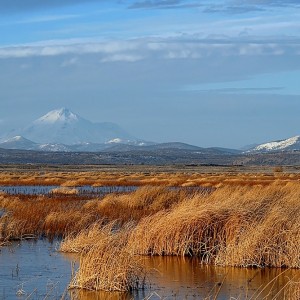The Stream, December 4: Uruguay Boosts Renewable Energy, Reduces Vulnerability to Drought
The Global Rundown |
Uruguay is increasing and diversifying its renewable energy sources, making the country’s power supplies less susceptible to drought. Floods in Tamil Nadu shut down an oil refinery and forced thousands of people to evacuate. El Nino is bringing a boon of tuna to Kiribati, and while it could relieve California’s drought to some extent, the state is still expecting low water deliveries next year. The world’s water footprint is higher than previously thought, a study found. Helping cities adapt their water management to address climate change is a major opportunity, according to some business leaders.
“[There’s] a recognition growing that it is good business for a city to invest in the capital infrastructure that can keep it up and running during difficult weather events. There’s a case to be made that better resilience leads to more economic investment.”–John Batten, the global director for water and cities at design and consultancy firm Arcadis, on what the company sees as a major business opportunity to help cities improve water management and prepare for climate change. (Reuters)
By The Numbers |
95 percent Amount of Uruguay’s electricity produced by renewable energy sources. By diversifying its renewable mix to include wind, biomass, and solar power, Uruguay has also reduced its vulnerability to drought by 70 percent, according to the country’s national director of energy. Guardian
2,000 people Number evacuated from widespread flooding in Tamil Nadu, where 269 people have died. The floods also closed an oil refinery and other businesses in the state. Reuters
$109 million Amount Kiribati is estimated to make from fishing licenses in 2015, a record. Warm waters linked to El Nino have pushed an unusual number of tuna into waters around the Pacific island nation. Reuters
Science, Studies, And Reports |
The world’s annual water footprint –the amount of water it takes to grow food, produce energy and goods, and supply domestic uses– is approximately 18 percent higher than previously estimated, according to a new study published in the journal Science. The study argues that the effects of dams and irrigation on the global water cycle were previously underestimated. The Washington Post
On The Radar |
Water deliveries from California’s State Water Project may reach just 10 percent of the amount requested next year as drought conditions continue, state officials announced. More precipitation from El Nino this winter could boost deliveries, but they are expected to remain low as reservoirs recover. San Francisco Chronicle
A news correspondent for Circle of Blue based out of Hawaii. She writes The Stream, Circle of Blue’s daily digest of international water news trends. Her interests include food security, ecology and the Great Lakes.
Contact Codi Kozacek







Leave a Reply
Want to join the discussion?Feel free to contribute!